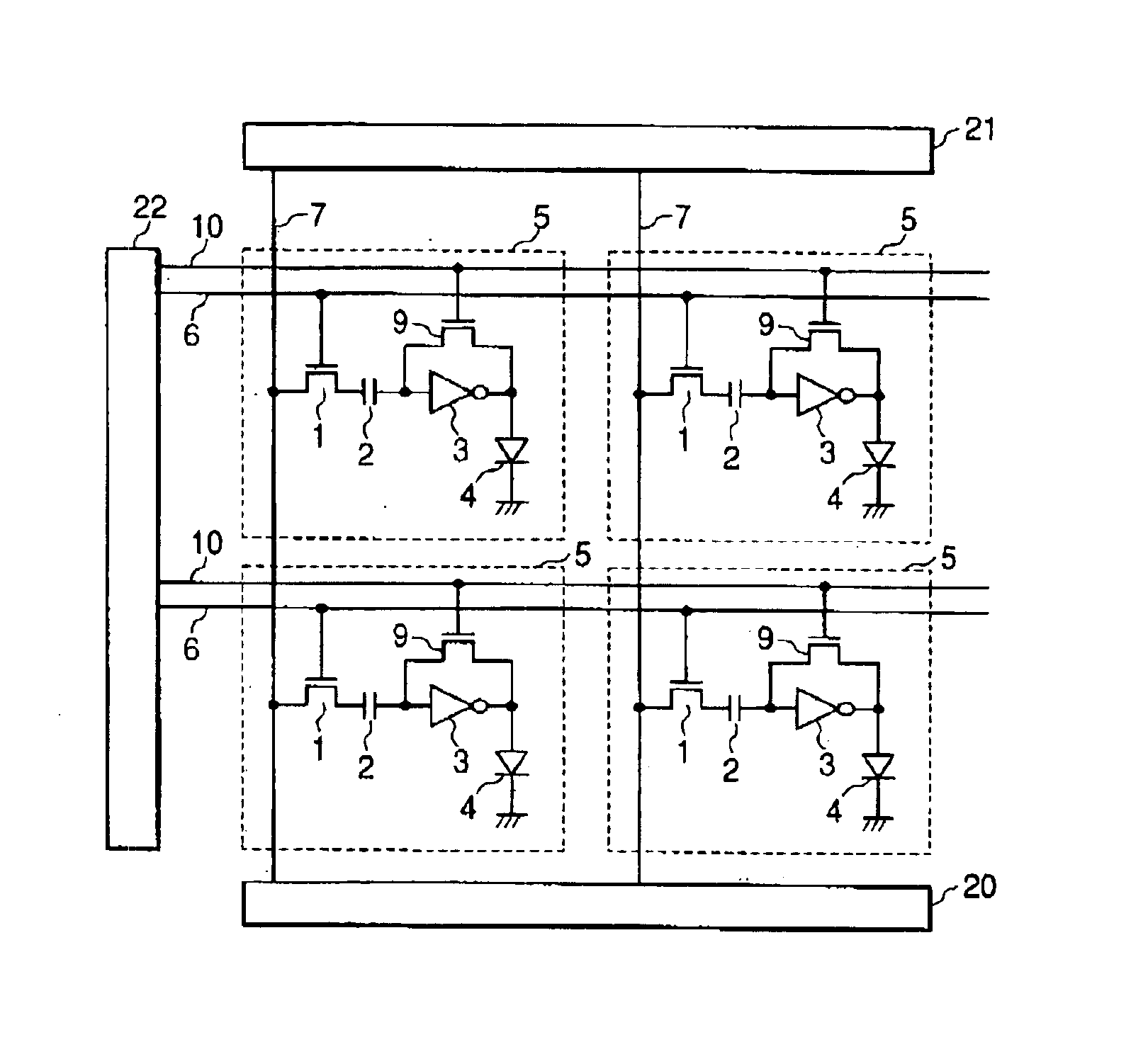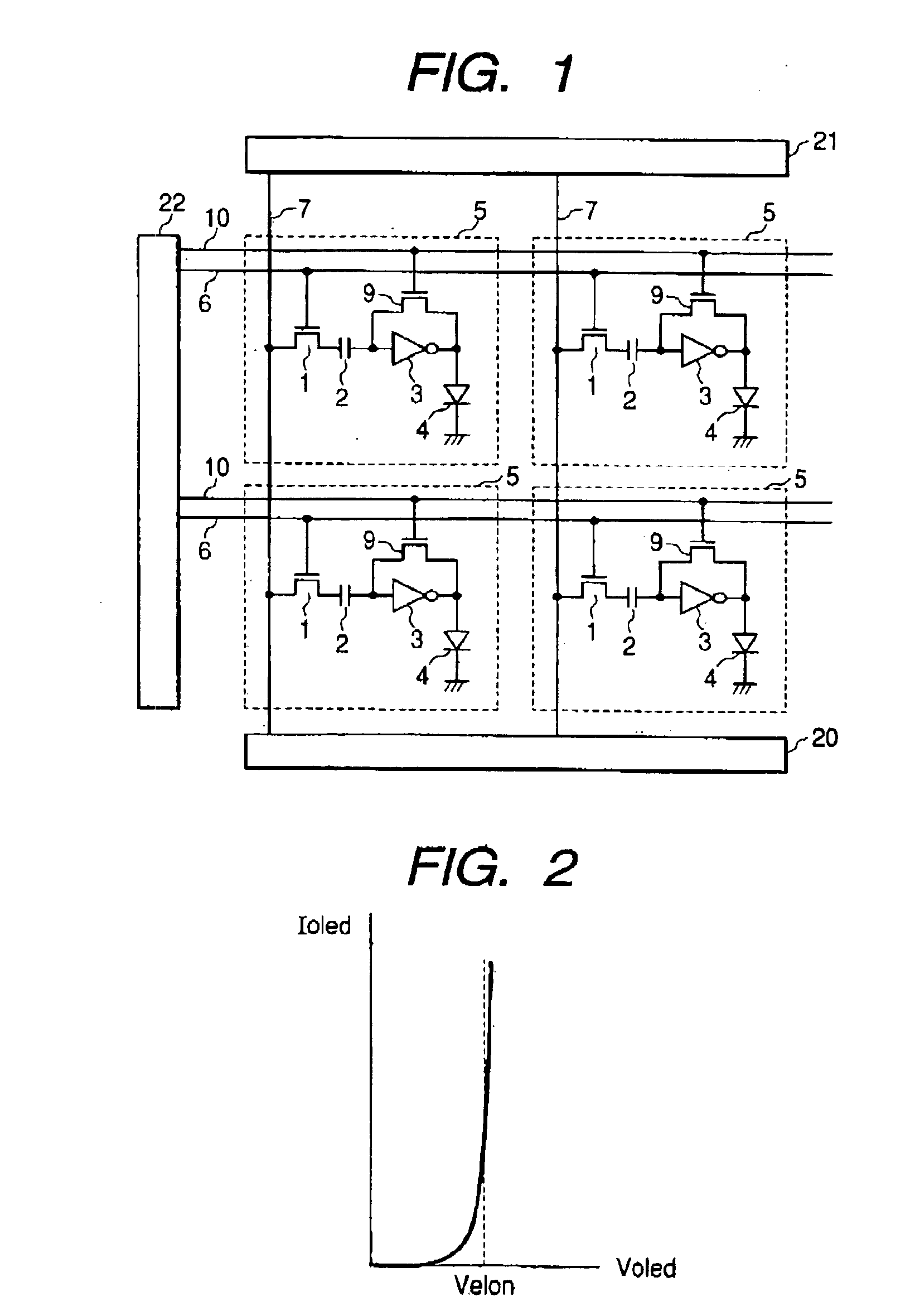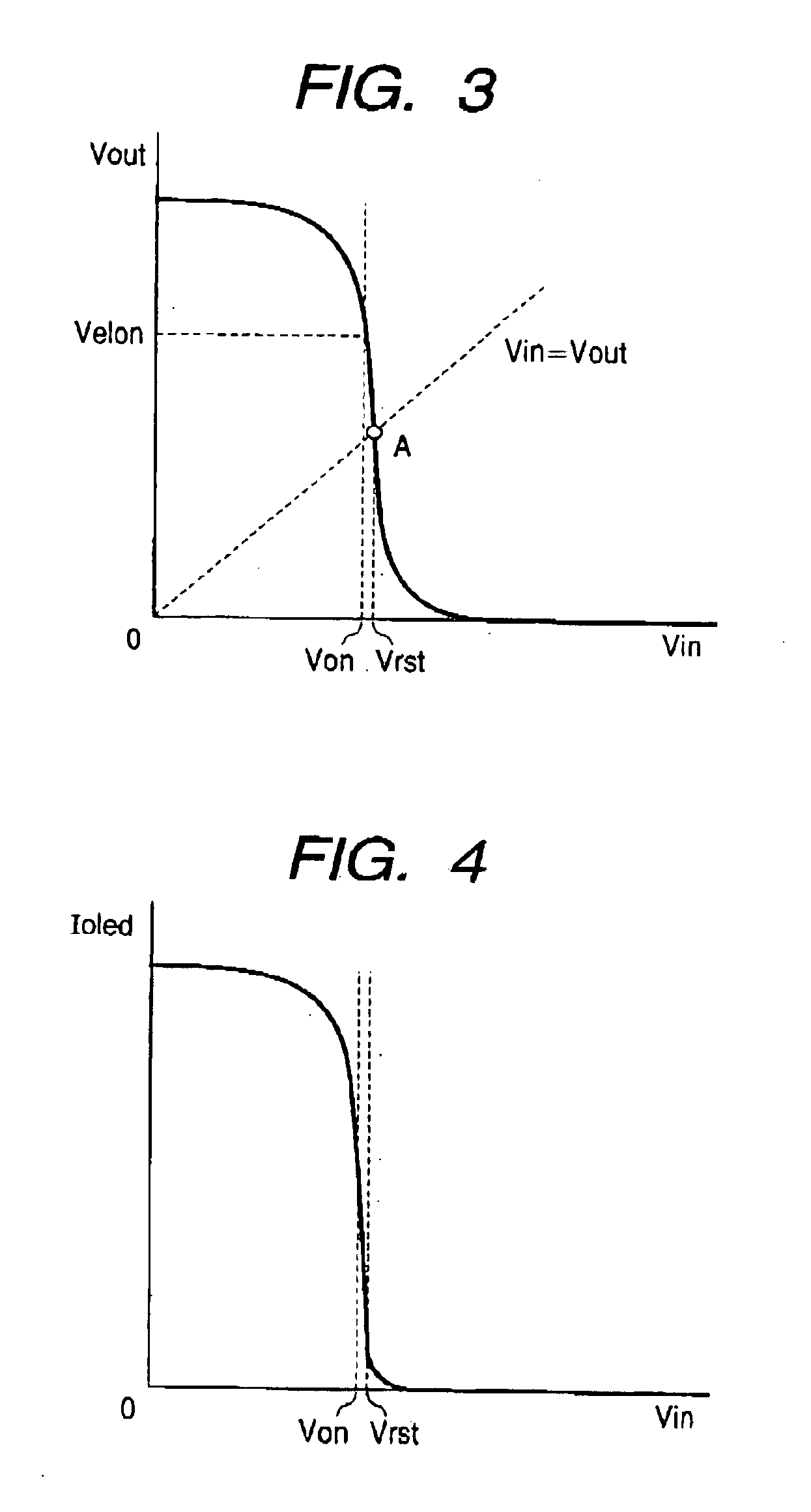Image display
a technology of image display and display panel, applied in the field of image display, can solve the problems of difficult to achieve multi-level illumination, difficult to minimize the characteristic variation among devices, and difficult to provide an image display capable of multi-level illumination
- Summary
- Abstract
- Description
- Claims
- Application Information
AI Technical Summary
Benefits of technology
Problems solved by technology
Method used
Image
Examples
first embodiment
(First Embodiment)
A first embodiment of the present invention will be described by referring to FIGS. 1 to 8.
First, an overall configuration of this embodiment will be explained by referring to FIG. 1.
FIG. 1 shows a configuration of an organic light emitting diode (OLED) display panel of this embodiment. Pixels 5 each having an OLED 4 as a pixel light emitting device are arranged in matrix in a display area. The pixels 5 are connected to predetermined drive circuits through gate lines 6, signal lines 7 and reset lines 10. The gate lines 6 and reset lines 10 are connected to a gate drive circuit 22, and the signal lines are connected to a signal drive circuit 21 and a triangular wave (triangular pattern) input circuit 20. The pixels 5, gate drive circuit 22, signal drive circuit 21 and triangular wave input circuit 20 are all formed from polysilicon TFTs on a glass substrate. In each pixel 5, the signal line 7 is connected through an input TFT 1 to one end of a storage capacitor 2, t...
second embodiment
(Second Embodiment)
A second embodiment of the present invention will be described by referring to FIG. 9.
The configuration and operation of this embodiment are basically similar to those of the first embodiment, except that the operation waveform of the signal line 7 differs from that of the first embodiment shown in FIG. 5. Thus, the descriptions of the configuration and operation of this embodiment are omitted here and only the operation waveform of the signal line 7, which is the feature of this embodiment, will be explained.
FIG. 9 shows the operation waveform of the signal line 7 in the second embodiment. In the first embodiment, during the driving periods the same pixel driving voltage sweep waveform is repeated for each horizontal scanning period. In the second embodiment, however, the pixel driving voltage sweep waveform is divided into three parts and three horizontal scanning periods combine to form one cycle of the triangular wave (triangular pattern).
This arrangement in t...
third embodiment
(Third Embodiment)
Now, a third embodiment of the present invention will be described by referring to FIG. 10.
The configuration and operation of this embodiment are basically similar to those of the first embodiment, except that the operation waveform of the signal line 7 differs from that of the first embodiment shown in FIG. 5. Thus, the descriptions of the configuration and operation of this embodiment are omitted here and only the operation waveform of the signal line 7, which is the feature of this embodiment, will be explained.
FIG. 10 shows the operation waveform of the signal line 7 in the third embodiment. In the first embodiment, the pixel driving voltage sweep waveform during the driving period is a continuously changing triangular wave. In the third embodiment, the writing signal is a 4-level (2-bit) illumination signal and the pixel driving voltage sweep waveform is also a 4-level stepped waveform. It should be noted here that each of the four voltage levels of the 4-leve...
PUM
| Property | Measurement | Unit |
|---|---|---|
| threshold voltage | aaaaa | aaaaa |
| voltage | aaaaa | aaaaa |
| capacitance | aaaaa | aaaaa |
Abstract
Description
Claims
Application Information
 Login to View More
Login to View More - R&D
- Intellectual Property
- Life Sciences
- Materials
- Tech Scout
- Unparalleled Data Quality
- Higher Quality Content
- 60% Fewer Hallucinations
Browse by: Latest US Patents, China's latest patents, Technical Efficacy Thesaurus, Application Domain, Technology Topic, Popular Technical Reports.
© 2025 PatSnap. All rights reserved.Legal|Privacy policy|Modern Slavery Act Transparency Statement|Sitemap|About US| Contact US: help@patsnap.com



